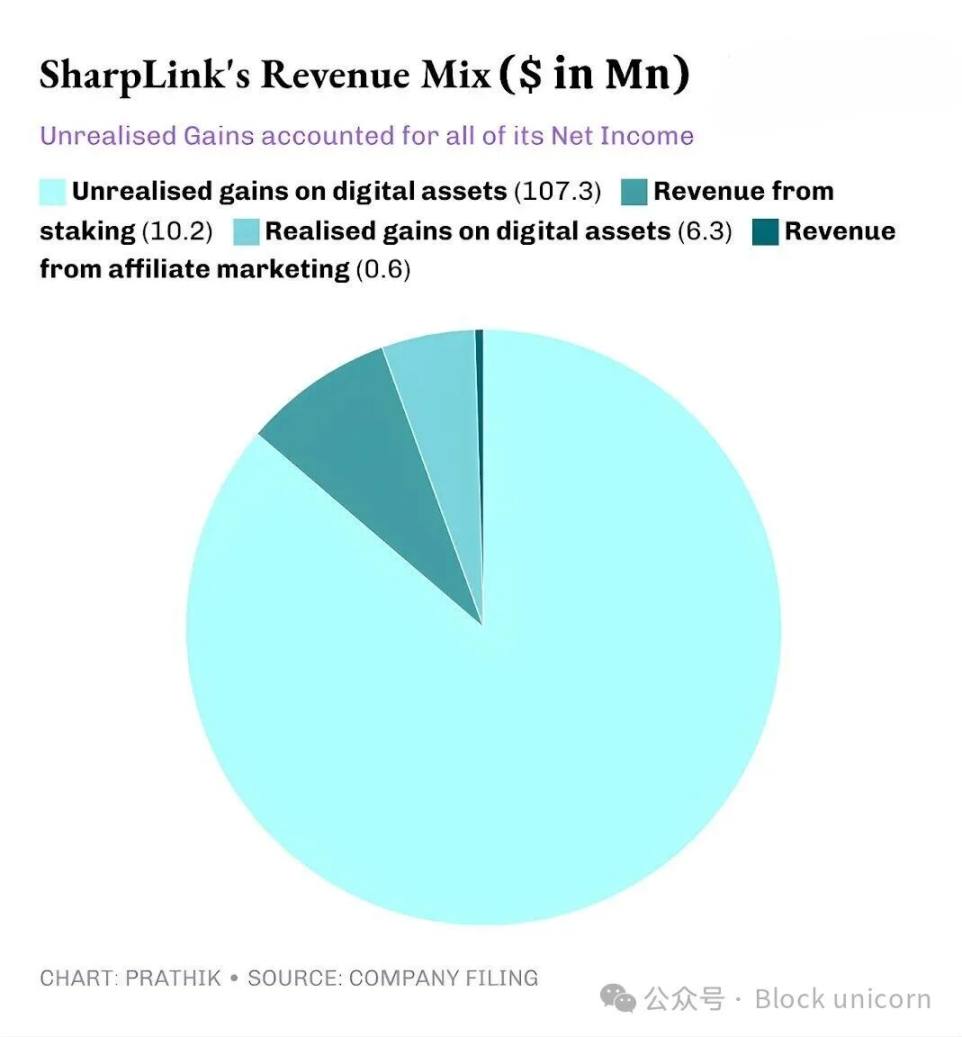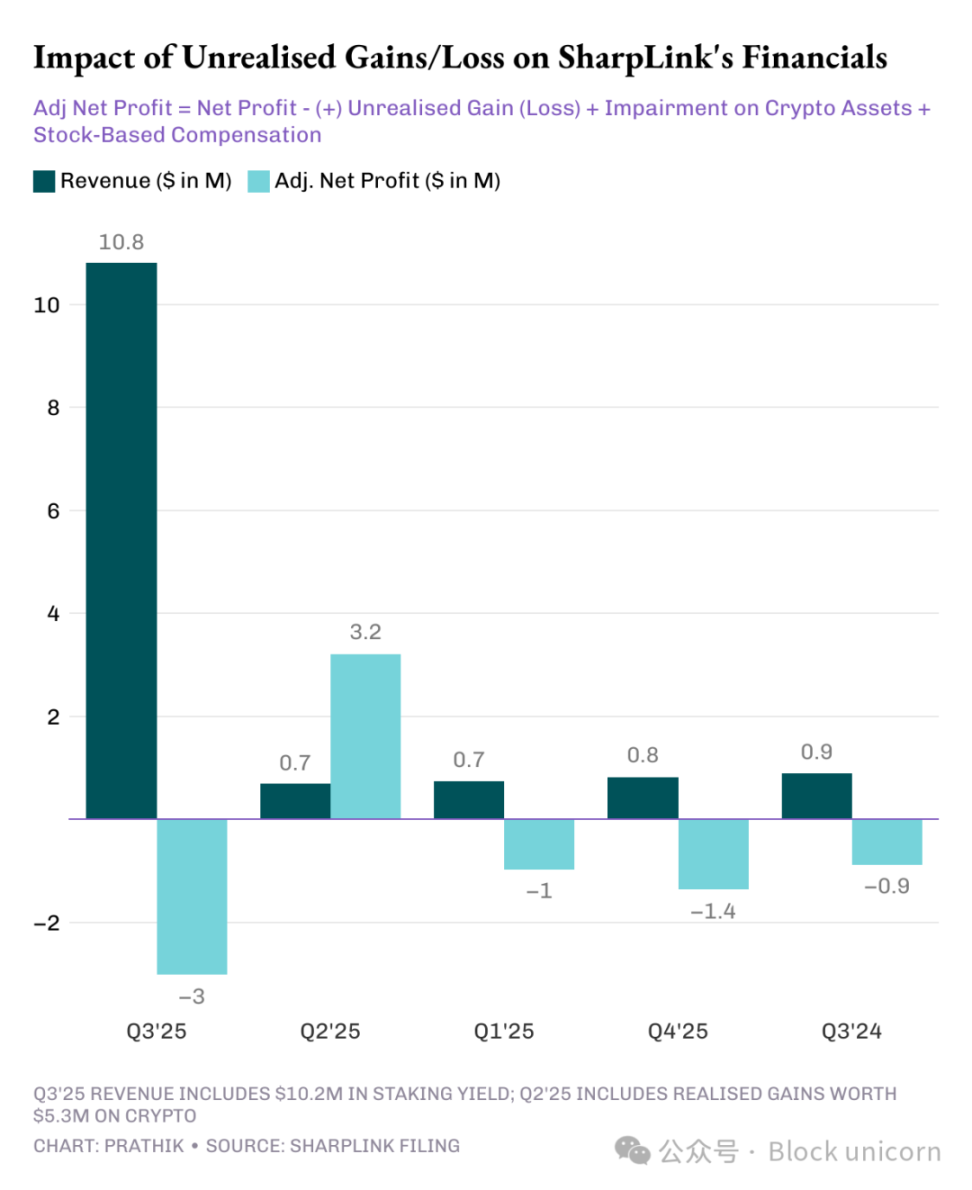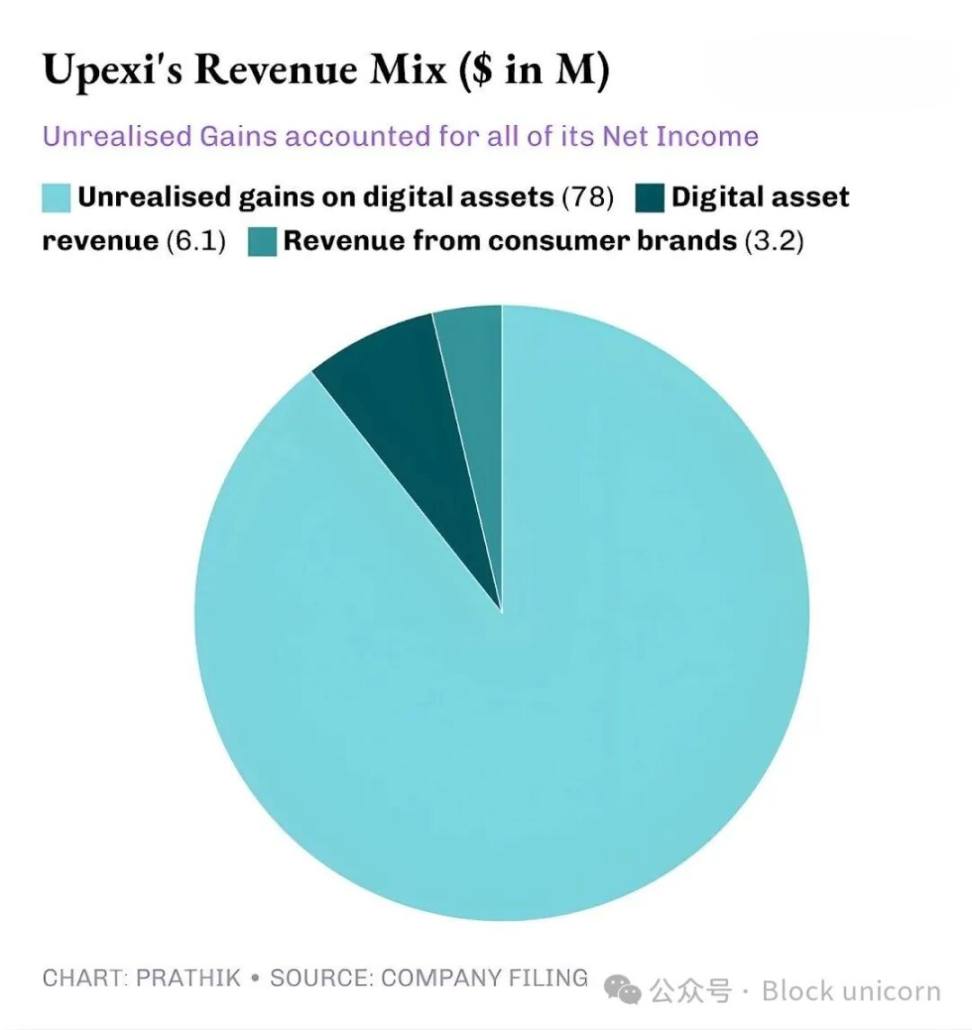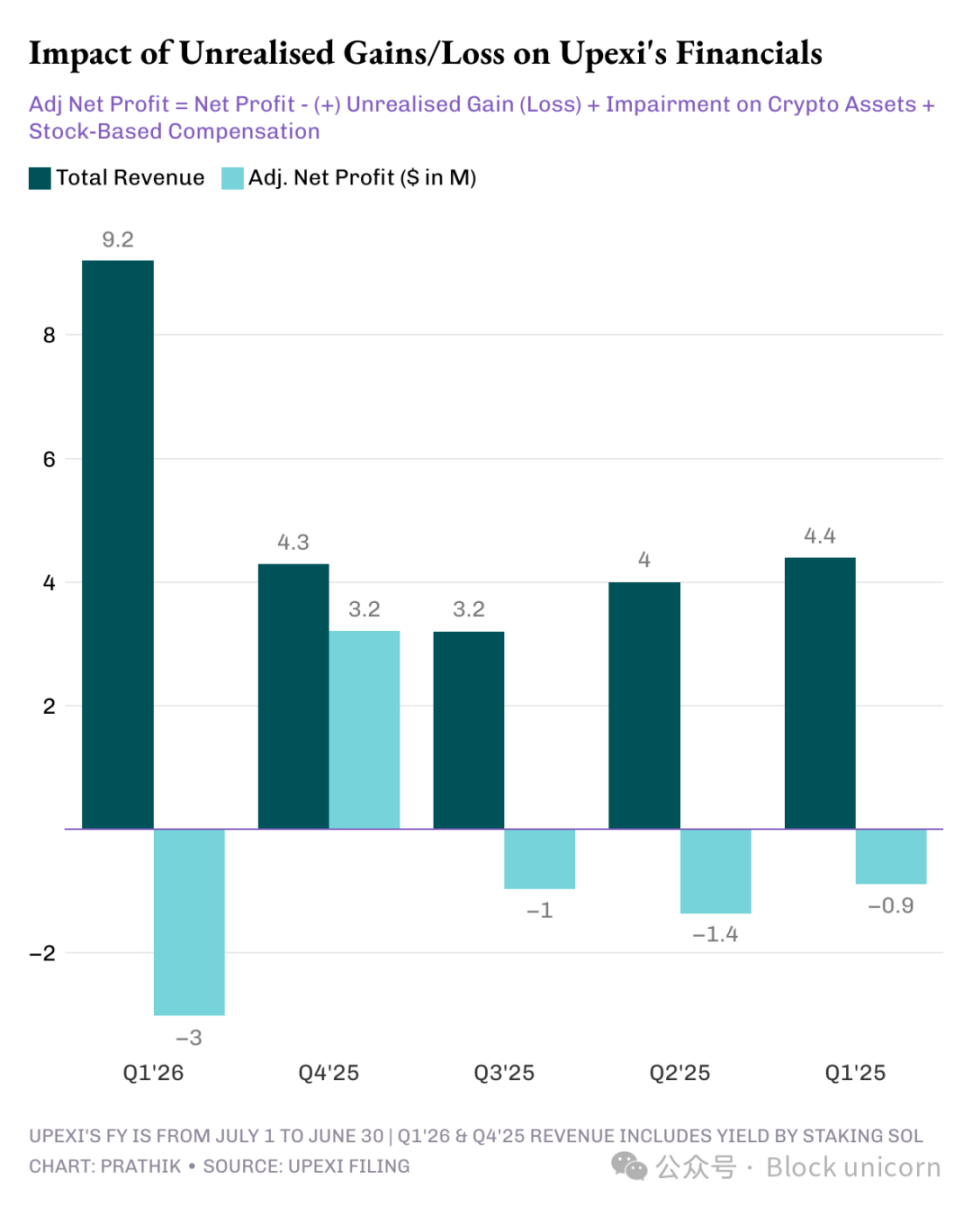SharpLink and Upexi: Each Has Its Own Advantages in DAT
Upexi and SharpLink have entered a domain where the boundaries between corporate financing and cryptocurrency fund management are blurred.
Written by: Prathik Desai
Translated by: Block unicorn
Preface
I honestly don’t know how I’ve made it through lately. An overwhelming flood of financial statements nearly drowned me. I’m starting to question my love for numbers—not because of over-analysis, but because each of the six financial analysis reports I’ve written in the past three weeks has revealed information that is extremely rare in corporate financial statements.
The financial status of Digital Asset Treasuries (DATs) is intricately intertwined with DeFi strategies, making the analysis of company financial performance extremely challenging.
Upexi and SharpLink Gaming released their quarterly financial reports this week; these are the companies I’ve most recently delved into for financial analysis.
On the surface, they seem like ordinary businesses: one sells consumer brands, the other is engaged in affiliate marketing for sports betting. But only by digging deeper do you discover that what truly impacts their valuation, determines their profitability, and shapes their overall image is not warehouses or e-commerce platforms, but cryptocurrency.
Upexi and SharpLink have entered a domain where the boundaries between corporate financing and cryptocurrency fund management are blurred.
In today’s article, I’ll walk you through the interesting things I’ve found in Ethereum and Solana treasuries, and what investors need to be aware of before gaining exposure to crypto through these channels.
SharpLink’s ETH Division
Less than a year ago, I would have described SharpLink as a niche sports affiliate marketing company—the kind that only comes to mind during the Super Bowl. Its financials looked much like any other mid-sized peer: meager revenue, performance affected by the seasonal schedule of sporting events, and frequent losses on the income statement.
There was no sign that the company had a $3 billion balance sheet.
All of this changed in June 2025, when the company made a decision that redefined its image: designating Ethereum as its primary treasury asset and becoming one of the leading enterprises holding ETH.
Since then, the company has restructured its business around Ethereum management, led by Joe Lubin. The Ethereum co-founder and Consensys founder and CEO joined SharpLink at the end of May as Chairman of the Board.
In recent months, SharpLink has directly allocated funds into native staking, liquid staking, and DeFi protocols, shifting its business focus to Ethereum. Three months later, this transformation is already bearing fruit.
SharpLink reported quarterly revenue of $10.8 million, an 11-fold increase from $900,000 in the same period last year. Of this, $10.2 million came from staking income from its ETH treasury, while only $600,000 came from its traditional affiliate marketing business.

SharpLink’s total assets grew from $2.6 million on December 31, 2024, to $3 billion on September 30, 2025.
At the end of the quarter, Sharplink held 817,747 ETH, which increased to 861,251 ETH by early November. Today, it is the second-largest corporate holder of ETH. Its 11-fold revenue growth is entirely attributable to this treasury segment.
This quarter, nearly 95% of SharpLink’s revenue came from staking yields on its ETH. While its net profit soared 100-fold to $104.3 million—compared to a net loss of $900,000 in Q3 2024—there’s a hidden issue. Like most other DAT projects, all of SharpLink’s profits come from unrealized gains on its ETH holdings.

This is because US GAAP requires companies to value assets at market fair value at the end of the accounting period. Contributions from affiliates to profits are negligible.
Therefore, all these unrealized gains are essentially non-cash. Even the income SharpLink receives from staking rewards is paid in ETH, not regularly converted to fiat. This is exactly where my concern lies.
Although non-cash income still counts as revenue in accounting, the company still burned $8.2 million in operating cash over nine months to pay salaries, legal and audit fees, and server costs.
So, where did these dollars come from?
Like most other DATs, SharpLink funds its ETH accumulation by issuing new shares. This year, the company raised $2.9 billion through equity issuance, then offset the dilution with a $1.5 billion stock buyback authorization.
This is a version of the DeFi flywheel effect, which is becoming increasingly common in DATs.
SharpLink issues shares and uses the proceeds to buy ETH. It stakes ETH to earn yields, books unrealized gains as ETH prices rise, and reports higher accounting profits, which enables it to issue more shares. The cycle repeats.
As I’ve noted in other DAT cases, this model works well in an uptrend. Even through several bear cycles, as long as the company’s cash reserves are sufficient to cover cash outflows, the model can function. Rising ETH prices boost the balance sheet, treasury value grows faster than operating costs, and the market gets a liquid, yield-enhanced public proxy for Ethereum.
But when prices move sideways for a long time (not unfamiliar to Ethereum holders), combined with high corporate costs, this vulnerability becomes apparent.
We’ve seen similar risks in the case of bitcoin fund management giant Strategy.
I expect nearly all DAT projects to face these risks, regardless of which cryptocurrency they invest in, unless they have robust cash reserves and healthy profitability to support their DAT projects. But we rarely see profitable companies going all-in on crypto.
We see this when Strategy chases BTC and SharpLink bets on ETH. The situation is similar for Solana treasuries.
Upexi’s Solana Factory
SharpLink has almost completely transformed from a betting affiliate company into an Ethereum treasury, while Upexi, even though it still retains the shell of a consumer brand company, has already embraced Solana.
I’ve been following Upexi for some time. From an operational perspective, most of their performance over the past five fiscal years has been positive. Brand acquisitions and revenue growth have been solid, and gross margins are satisfactory. However, at the corporate level, Upexi has posted net losses for the past four fiscal years.
Perhaps this is what prompted the company to include digital assets in its financial statements. Over the past two quarters, this shift, though small, has been noticeable. This quarter, digital assets have come to dominate the company’s financials.
In Q3 2025, Upexi reported revenue of $9.2 million, of which $6.1 million came from SOL staking, and the remaining $3.1 million from its consumer brands business. For a consumer goods company that had zero crypto business revenue last quarter, having two-thirds of its revenue from digital asset staking is a huge leap.

Upexi currently holds 2.07 million SOL tokens, worth over $400 million, about 95% of which are staked. This quarter alone, they earned 31,347 SOL tokens as staking rewards.
The biggest difference between Upexi and other DATs lies in its strategy for acquiring locked SOL.
The company purchased about 1.05 million locked SOL at an average 14% market discount, with unlock periods ranging from 2026 to 2028.
Locked tokens cannot currently be sold, so they trade at a lower price. As these locked SOL tokens unlock, their value will naturally rise to match regular SOL tokens, allowing Upexi to earn both staking rewards and built-in price appreciation from these SOL tokens.
This approach is more like a hedge fund than a typical DAT. But when you look at Upexi’s cash flow, the same concerns arise—just like with SharpLink.
This strategy is typically seen in hedge funds, not ordinary DATs (Digital Asset Treasuries). But when you examine Upexi’s cash flow, you’ll find the same issues as with SharpLink.
Although Upexi reported net profit of $66.7 million, of which $78 million was unrealized gains, the company still recorded $9.8 million in operating cash outflows. Since SOL staking income is not converted to fiat, it remains non-cash income. As a result, the company has taken the same measures as other DATs that rely on capital reserves: financing.

Upexi raised $200 million through convertible bonds and secured a $500 million equity financing facility. Its short-term debt increased from $20 million to $50 million.
It’s the same flywheel, but with similar risks. What happens if SOL cools off for a year?
SharpLink and Upexi are both building some very clever products. But that doesn’t mean they’re sustainable.
No Simple Answers
There’s a pattern here that I can’t ignore: both companies are running financial systems that make sense when the macro environment is favorable. They’ve both built treasuries that can scale with network activity; they’ve both designed yield structures that supplement revenue streams; and through these moves, they’ve become top public proxies for two of the world’s most important Layer-1 blockchains.
Yet, almost all of their profits come from unrealized gains, the token income they earn is illiquid, there’s no sign of systematically converting treasury assets to cash to realize profits, they report negative operating cash, and they use capital markets to pay the bills.
This is less a criticism than a reality and trade-off that every company adopting the DAT architecture must face.
For this model to be sustainable, one of two things must happen: either staking truly becomes a corporate cash engine, continually funding digital asset purchases; or companies must incorporate planned digital asset sales into their digital asset strategies to realize systematic profits.
This is not impossible. Sharplink earned $10.3 million by staking ETH, while Upexi earned $6.08 million by staking SOL.
These amounts are not insignificant. Even if a portion is recycled into the fiat system to support operations, the end result could be different.
Until then, Upexi and Sharplink both face the same dilemma: balancing extraordinary innovation with capital market liquidity.